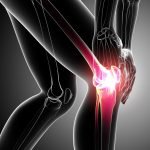The Pathological Sequelae of Shift Work
Catherine Darley, ND
In our modern society we’ve become a 24-hour culture where you can do your shopping, work, and play at all hours of the night like never before. The time that humans historically have slept is called our “biological night.” A full 20% of working Americans do shift work, performing on the job during their biological night.1 In recent years, medical research has shown that there are negative consequences of doing shift work, both in the physical and psychological arena. According to Smith and colleagues, this is because shift workers are “desynchronized from their social and physical environment.”2
Who are the Shift Workers?
According to the National Sleep Foundation’s 2008 Sleep in America poll, 7% of Americans are shift workers, based on the definition that their work day starts after 6 pm and before 6 am.3 When using the expanded definition, which includes swing shift (starting after 3 pm), this percentage increases significantly to about 20% of Americans.1 Shift workers are significantly more likely to get less than 6 hours of sleep on work nights, to drive drowsy, and to have sleep apnea than those who work during the day. Shift workers are more likely to be male, have blue collar jobs, and work longer weeks (49.13 vs. 44.63 hours).3 Some industries that employ shift workers are transportation, healthcare, hospitality, and public safety.
There are many different shift work schedules, some involving the standard 8-hour shift, and some extended shifts. A rotating shift is when an employee works all 3 shifts over the course of days or weeks (see Figure).4 A rapidly rotating shift could be 3 work days, then one rest day, followed by a switch to a new shift. Shifts can be rotated with an advance or a delay. Extended shifts are greater than 12 hours, and are seen in public safety workers and hospital staff.
Sleep During Shift Work
Shift workers report that their sleep is lighter and less restorative than day workers. These workers get less sleep than day workers and have more extended periods of wakefulness. Shift workers are significantly sleepy, as much so as is seen in hypersomnia. They also have insomnia at 3-4 times the rate of non-shift workers.5 Shift workers rate themselves more physically and mentally tired at the end of their work day than day workers do.6
Physical Consequences
Some research has looked at cardiovascular disease (CVD) in shift workers. Metabolic syndrome, characterized by hypertension, hyperglycemia, dyslipidemia, and central obesity is a risk factor for CVD. In looking at shift workers, Mina et al found that, in men, blood pressure and cholesterol levels increased as the duration of shift work increased, especially in those more than 30 years old. In women, those over 30 years old with the longest duration of shift work had the highest waist to hip ratio.7 Blood pressure, both systolic and diastolic, increases over the duration of shift work, and heart rate variability decreases, showing a negative effect of shift work on the cardiovascular system.8
Over 50% of shift workers report gastrointestinal symptoms, and have increased risk of duodenal ulcer in comparison to day workers.9,10
In women, shift workers have more menstrual irregularity and longer cycles than non-shift workers.11 This is thought to be due to the abnormal light exposure during the night, and the resulting decrease in melatonin secretion.
The stress hormones norepinephrine, epinephrine, and dopamine are more elevated in people who have done shift work for more than 5 years, compared to those who’ve done less than 5 years.12 Among workers with less than 5 years of shift work experience, these stress hormones were elevated at the times they reported the most subjective fatigue. This finding is not true for the long-term shift workers, and the authors theorize that the long-term shift workers have adapted to the stress and no longer perceive it as stressful.
Recent research has found that there is an increased risk of breast cancer among those who work graveyard shift. This risk seems to increase with the more graveyard hours worked, and the greater the number of years on this schedule.13 The researchers suggest that suppression of the normal nocturnal melatonin surge, which would increase the ovarian release of estrogen, may be linked to breast cancer risk.
Social-Emotional Health Consequences
Family and marital relationships can suffer from shift work. Those who do 8-hour backward rotating shifts are found to have the least family and personal time of those on any other shift.14 Partners of shift workers report that they are unhappy with the shift work schedule, and that their lives are significantly disrupted by it.15 Permanent night workers are absent more often, and experience less overall job satisfaction than day workers.16
The research data about the prevalence of depression in shift workers is conflicting. Some research shows no increase, while other pilot data show a significant life-time risk of developing major depressive disorder for shift workers, especially in women.17,18 For those in a northern latitude, shift working may increase the risk of seasonal affective disorder.19
Performance, Safety and Driving
In addition to the physical and psychological symptoms shift workers experience, they also have performance decrements that may endanger themselves and others. It is well established that disruption of the circadian rhythm causes short-term performance decrements which can lead to accidents. The most memorable industrial accidents related to shift work are Chernobyl, Three Mile Island and Bhopal.20
In 2005, Rouch et al showed that there are also long-term cognitive impairments which are dependent on the duration of shift work.21 This study included 3,237 people ages 32 to 62. Job history, sleep questionnaire and cognitive tests were collected from each participant. Men who were currently doing shift work had lower cognitive performance scores than those who had never done shift work. And this performance decrement increased the more years the person had done shift work, up to 10 to 20 years. In those who had moved to a normal day schedule, after 4 years their cognitive performance was on par with those who had never done shift work, showing this cognitive impairment is somewhat reversible.
There is a significantly increased risk of auto accidents for shift workers on the way home. One study of emergency medical residents found that 75% of their motor vehicle accidents and 80% of near accidents were following the night shift.22 Factors that contribute to increased risk of falling asleep at the wheel include length of sleep before shift, type of shift, and traveling time.23
Strategies for Successful Shift Work
What can we do to help our patients deal well with shift work? The first thing is to provide them with some basic sleep health education. This should involve information on:
- How much sleep adults need.
- What constitutes a healthy sleep environment.
- The basic workings of the circadian system.
From there, the second thing is to help the patient develop a schedule or lifestyle which provides adequate sleep time and is as consistent as possible while allowing meaningful connection with loved ones during days off work. I find that making such a schedule is much easier once the patient has a basic understanding of human sleep. Kerin and Aguirre conducted a study which provided a training workshop on “Managing A Shiftwork Lifestyle.”24 In comparison to pre-training measures, one month after the training, participants got more sleep on work days, found it easier to complete their domestic responsibilities, and easier to find time for recreation. Their gastrointestinal complaint score dropped significantly, excessive caffeine intake decreased, and more employees were choosing healthy eating habits. Prophylactic naps before the first night of shift work can help workers.
Some people are able to adapt to shift work more easily than others. Those who perceive themselves as good adapters have greater psychological well-being, less chronic fatigue, and less disruption in their family and social function.4 Interestingly, those who adapt to shift work more easily also take more frequent and longer naps. They have incorporated getting the sleep they need into their lifestyle. This group also smokes more cigarettes during their shift, the nicotine having alerting effects. People who consider themselves able to easily adapt to shift work are younger than those who perceive shift work adaptation as difficult. Adaptation to shift work can be predicted by fit to the job, being an evening person, more continuous sleep in the daytime, youth, fewer family problems, more time outside in the afternoon before the night shift, and greater locus of control. The good adapters show better health at routine checkups which include ECGs, blood pressure, urinalysis, and blood tests.
As mentioned, one important feature of people who do better on shift work are those with an internal locus of control.2 Those with the highest perception of internal control had the fewest problems with sleep and fatigue. With an internal locus of control, people perceive that they are responsible for the outcomes in their life. They are more likely to put effort into health behaviors, and to seek out the information they need to cope well with shift work. The third thing we can do to help our patients deal well with shift work is to develop a plan to promote alertness and safety during work hours. Risk of accidents and injuries are higher in the afternoon shift, with a peak at midnight. This risk increases over 4 nights.25 There is some discussion in the nursing literature about allowing nurse employees to choose the schedule they prefer, whether it is a permanent schedule, rapidly rotating shifts, or extended hours.26,27 This plan must also address the work commute as a primary safety concern.
Conclusion
Based on the number of people doing shift work, the concerns outlined above may be relevant for up to 20% of those patients seen in the naturopathic office. With our focus on prevention and education we can positively impact our shift-working patients’ overall well-being.
Why Naturopathic Sleep Medicine?
In 1995, while working in a sleep research lab, I had an epiphany. I’d been thinking about the many career paths I could take in the sleep arena, and rejecting each in turn. Being a researcher would be interesting, but I was concerned with the long lag time before research findings help citizens. Clinical sleep specialists at that time were primarily pulmonologists, and I wasn’t particularly interested in sleep apnea. Psychiatry was out because I just didn’t think such a basic and essential function should be achieved with drugs. The defining moment came sitting on the train late one night riding from New York to Rhode Island when I remembered naturopathic medicine, which my grandfather had introduced me to in Seattle. Naturopathic medicine fit well with my preventive and natural philosophy for addressing sleep. At that moment I decided to attend Bastyr, specialize in Sleep Medicine, and be a bridge between the conventional sleep medicine and naturopathic communities, with a foot in each. My intention since then has been to establish the field of Naturopathic Sleep Medicine, in which practitioners have the specialty knowledge of sleep physiology and sleep disorders, and the skills to treat in accordance with our naturopathic principles.
In naturopathic medicine we think a lot about the ‘Determinants of Health’, all those things that shape an individual’s health. Some determinants of health are nutrition, past illnesses, emotional environment, physical movement, and genetics. Foremost among those are appropriate nutrition, healthful exercise patterns, and, in my estimation, optimal sleep. In naturopathic school we learn about the underlying naturopathic philosophy that includes the determinants of health. We also have courses in diet, nutritional therapy, exercise physiology and exercise prescriptions, and counseling. Yet sleep, a basic and critical determinant of health, is only briefly covered for an hour or 2 during the 4-year program. This is comparable to the amount of sleep education typical in allopathic schools. Given our belief in the determinants of health, sleep is an area to further integrate.
Why is it so important for clinicians to be knowledgeable about sleep health? First, we all sleep. That may seem like a smart-aleck answer, but think about it for a moment. There are few things that all humans must do to live. And sleep is one of them. So sleep health is relevant for each of your patients. Secondly, sleep health affects all areas of functioning; physical, cognitive, and emotional. Sleep also interacts in a complex manner with most organ systems. For instance, let’s look at the connection between obesity and sleep deprivation. Obesity is a good example because so many systems play a role. Obesity is on the rise and is becoming a major public health concern. When a person is partially sleep deprived, their appetite hormones leptin and ghrelin are altered in a way that causes them to become hungrier, and hungry for more fatty and high-carbohydrate foods. Their cells also become less able to use insulin efficiently. Cortisol and thyroid hormone profiles change and weight gain ensues.
Sadly, 47% of American adults get less than the recommended amount of sleep, as do 53% of grade school students and 80% of high schoolers. Therefore, insufficient sleep is by far the most prevalent sleep disorder. Chronic partial sleep deprivation has been shown to have a role in obesity, cardiovascular disease, inflammation, cognitive impairments, immune function, mental health, motivation to exercise, pain severity, headaches, and occupational and auto accidents. Imagine how health in America would be changed if everyone got as much sleep as they needed.
Our naturopathic principles, therapeutic order, and style of practice make us uniquely suited to help our patients get the sleep they need to be healthy. We typically have more time with our patients than other physicians, so we can include this important topic in the intake and treatment plan. We are experts at using the principle Docere to educate our patients in how to care for themselves. Behavioral sleep medicine, which uses many Docere techniques, has been shown to be effective for many sleep problems. We can use the least invasive yet effective medicines to help people get the sleep they need, fulfilling Primum Non Nocere. Earlier we did a quick overview of how sleep interacts with many organ systems and has a role in many diseases. A component of Tolle Totem is to think about the multifactorial cause of disease, and to address all the causes. Allopathic sleep centers are treating sleep disorders. We can have a more significant impact when we work on sleep for establishing health and preventing disease in patients at our primary care offices. Many sleep complaints could be addressed in the general naturopathic office, provided that NDs have a better sleep education.
In light of the mounting evidence that sleep touches on almost all areas of health and wellbeing, it is important for all naturopaths to learn sleep physiology and disorders during their training. I propose that naturopathic education begin to include a sleep course which would cover sleep physiology, circadian rhythms, sleep disorders, and the interaction of sleep with other organ systems and diseases. Electives can allow interested students and current practitioners to deepen their knowledge and skills. Additionally, there is a place for creation of a specialty field (similar to the American Board of Naturopathic Oncology) of sleep specialists who adhere to naturopathic principles. Together, these deepening levels of expertise will serve our patients and the public health of our nation.
 Catherine Darley, ND practices at The Institute of Naturopathic Sleep Medicine in Seattle, Washington. Dr. Darley is passionate about the role healthy sleep plays in overall health and quality of life, and is pioneering the field of naturopathic sleep medicine. While attending Bastyr, Dr. Darley did shift work many nights at Seattle area sleep labs, so this topic is close to her heart. In addition to providing patient care, she does public sleep education and corporate consultations.
Catherine Darley, ND practices at The Institute of Naturopathic Sleep Medicine in Seattle, Washington. Dr. Darley is passionate about the role healthy sleep plays in overall health and quality of life, and is pioneering the field of naturopathic sleep medicine. While attending Bastyr, Dr. Darley did shift work many nights at Seattle area sleep labs, so this topic is close to her heart. In addition to providing patient care, she does public sleep education and corporate consultations.
References
1. Monk TH. Shift work. In: Kryger MH, Roth T, Dement WC, eds. Principles and Practice of Sleep Medicine. 2nd ed. Philadelphia, PA: WB Saunders Company; 1994:600-605.
2. Smith L, Tanigawa T, Takahashi M, et al. Shiftwork locus of control, situational and behavioural effects on sleepiness and fatigue in shiftworkers. Ind Health. 2005;43(1):151-170.
3. 2008 Sleep in America Poll. National Sleep Foundation Web site. http://www.sleepfoundation.org/sites/default/files/2008%20POLL%20SOF.PDF. Accessed January 20, 2010.
4. Takahashi M, Tanigawa T, Tachibana N, et al. Modifying effects of perceived adaptation to shift work on health, wellbeing, and alertness on the job among nuclear power plant operators. Ind Health. 2005;43:171-178.
5. Kageyama T, Nishikido N, Kobayashi T, Oga J, Kawashima M. Cross-sectional survey on risk factors for insomnia in Japanese female hospital nurses working rapidly rotating shift systems. J Hum Ergol. 2001;30(1-2):149-154.
6. Tepas DI, Barnes-Farrell JL, Bobko N, Fischer FM, Iskra-Golec I, Kaliterna L. The impact of night work on subjective reports of well-being: an exploratory study of health care workers from five nations. Rev Saude Pulica. 2004;38(suppl):26-31.
7. Ha M, Park J. Shiftwork and metabolic risk factors of cardiovascular disease. J Occup Health. 2005;47(2):89-95.
8. Ha M, Kim J, Park J, Chung HK. Blood pressure and heart rate variability in workers of 8-hour shifts. J Hum Ergol. 2001;30(1-2):229-233.
9. Cruz C, Della Rocco P, Hackworth C. Effects of quick rotating shift schedules on the health and adjustment of air traffic controllers. Aviat Space Environ Med. 2000;71(4):400-407.
10. Pietroiusti A, Forlini A, Magrini A, et al. Shift work increases the frequency of duodenal ulcer in H pylori infected workers. Occup Environ Med. 2006;63(11):773-775.
11. Baker FC, Driver HS. Circadian rhythms, sleep, and the menstrual cycle. Sleep Med. 2007;8(6):613-622.
12. Park J, Ha M, Yi Y, Kim Y. Subjective fatigue and stress hormone levels in urine according to duration of shiftwork. J Occup Health. 2006;48(6):446-450.
13. Davis S, Mirick DK, Stevens RG. Night shift work, light at night, and risk of breast cancer. J Natl Cancer Inst. 2001;93(20):1557-1562.
14. Jaffe MP, Smolensky MH, Wun CC. Sleep quality and physical and social well-being in North American petrochemical shift workers. South Med J. 1996;89(3):305-312.
15. Smith L, Folkard S. The perceptions and feelings of shiftworkers’ partners. Ergonomics. 1993;36(1-3):299-305.
16. Burch JB, Tom J, Zhai Y, Criswell L, Leo E, Ogoussan K. Shiftwork impacts and adaptation among health care workers. Occup Med. 2009; 59(3):159-166.
17. Goodrich S, Weaver KA. Differences in depressive symptoms between traditional workers and shiftworkers. Psychol Rep. 1998;83(2):571-576.
18. Scott AJ, Monk TH, Brink LL. Shiftwork as a risk factor for depression: a pilot study. Int J Occup Environ Health. 1997;3(suppl 2):S2-S9.
19. McLaughlin C, Bowman ML, Bradley CL, Mistlberger RE. A prospective study of seasonal variation in shift-work tolerance. Chronobiol Int. 2008;25(2):455-470.
20. Rajaratnam SM, Arendt J. Health in a 24-h society. Lancet. 2001;358(9286):999-1005.
21. Rouch I, Wild P, Ansiau D, Marquié JC. Shiftwork experience, age and cognitive performance. Ergonomics. 2005;48(10):1282-1293.
22. Steele MT, Ma OJ, Watson WA, Thomas HA Jr, Muelleman RL. The occupational risk of motor vehicle collisions for emergency medicine residents. Acad Emerg Med. 1999;6(10):1050-1053.
23. Rogers A, Holmes S, Spencer M. The effect of shiftwork on driving to and from work. J Hum Ergol. 2001;30(1-2):131-136.
24. Kerin A, Aguirre A. Improving health, safety, and profits in extended hours operations (shiftwork). Ind Health. 2005;43(1):201-208.
25. Folkard S, Akerstedt T. Trends in the risk of accidents and injuries and their implications for models of fatigue and performance. Aviat Space Environ Med. 2004;75(3 Suppl):A161-A167.
26. Korompeli A, Sourtzi P, Tzavara C, Velonakis E. Rotating shift-related changes in hormone levels in intensive care unit nurses. J Adv Nurs. 2009;65(6):1274-1282.
27. West S. Circadian rhythms, shiftwork and you! Collegian. 2001;8(4):14-21.










